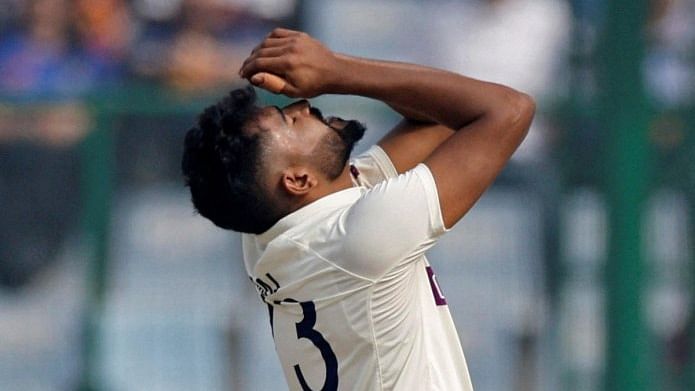
“These are the kind of pitches we want to play on, this is our strength. When you’re playing at your home, you always play to your strength and that strength is spin bowling and our batting depth. Everyone uses that advantage outside, so what’s wrong in that?”
So said Rohit Sharma after India succumbed to a nine-wicket defeat to Australia, well inside three days, in the third Test in Indore. Despite their 'batting depth', the hosts folded up for 109 and 163. And despite the strength of their spin bowling, their three spinners together produced combined match figures of 82.2-17-222-8. Just to place things in perspective, Australian off-spinner Nathan Lyon alone had figures of eight for 64 from 23.3 overs in the Indian second innings. All this on a crumbling, wicked surface that was rated ‘poor’ by ICC match referee Chris Broad.
The lack of penetration of the spinners at the Holkar Stadium can be written off as a one-off, especially after the batters managed a woefully below-par first-innings performance on the opening day, but the misfiring Indian top order has been the story of the series thus far. India’s 400 in their first innings of the series in Nagpur came primarily on the back of half-centuries from Ravindra Jadeja and Axar Patel who backed up Rohit’s classy 120, while in New Delhi, it was entirely due to a century stand for the eighth wicket between Axar and R Ashwin that the hosts got to within one run of the Aussies’ 263 in the first innings.
With spin and batting implosions and dry pitches being the primary talking points, the role (or lack thereof) of the Indian quicks has gone almost unnoticed. Under the Virat Kohli-Ravi Shastri-B Arun management group, India assembled a battery of quicks that was the envy of the cricket world. There was quality and depth, the production line vibrant and varied, and the results were evident in Australia (twice) and England when India bested the established powerhouses at their own game.
At home, however, with Indian captain Rohit insisting that spin is the way to go, the quicker bowlers have been reduced to sideshows, if not afterthoughts. Even in Jasprit Bumrah’s continued injury-enforced absence, India have several aces in their pace pack. Mohammed Shami. Umesh Yadav. Mohammed Siraj. Jaydev Unadkat. And yet, it’s as if they are in the XI largely to make up the numbers.
Shami, Umesh and Siraj together have accounted for just a fifth of the 301.3 overs sent down by India’s bowlers in the six Aussie innings so far. Siraj, the only quick to play all three Tests, has bowled a mere 24 overs – that’s an average of eight overs per Test. Four times out of six, India have used at least one spinner with the new ball, and in two innings, Siraj hasn’t been required to bowl at all. All of this begs the question: Won’t India be better off playing just one quick and bolstering their underachieving batting group?
Axar, the lead spinner two years ago when he picked up 27 wickets in his first three Tests against England, has had to be grossly underutilised with Rohit understandably placing greater faith in the established strike force of Ashwin and Jadeja, who together have more than 700 Test wickets. The second left-arm spinner has bowled precisely 13 overs in each of the three Tests and has just one wicket to his name. Perhaps if he is part of a four-man bowling group than a bit actor in a five-cog wheel, he will bowl more, and more incisively.
By doing away with a superfluous pace resource, India will also be able to bring back Suryakumar Yadav to add flair, enterprise and urgency to a batting group that’s oscillated between the extremely timid and the fecklessly adventurous.
Particularly following Rishabh Pant’s unfortunate accident, India desperately need an all-action hero in the upper middle-order who can unsettle the opposition and ensure that Lyon and his understudies, Todd Murphy and Matt Kuhnemann, aren’t allowed to do their bidding. Positivity and aggression come naturally to Suryakumar, so it won’t be the worst move to further strengthen the batting and let him loose on an Australian attack that feasted on indecisiveness in Indore.
All this, under the assumption that the Ahmedabad strip won’t be too dissimilar to the ones laid out for the first two Tests, at least. With head coach Rahul Dravid arriving here as part of the advance party ahead of the rest of the team, that is a reasonably safe assumption to make.